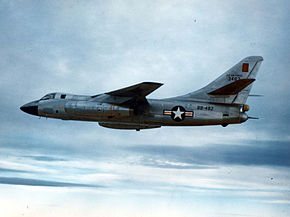17th Bombardment Group
| 17th Bombardment Group | |
|---|---|

Douglas B-66 as flown by the group
|
|
| Active | 1931–1945; 1947–1948; 1952–1958 |
| Country | United States |
| Branch | United States Air Force |
| Role | Technical Military Training |
| Size | Group |
| Part of | Tactical Air Command |
| Motto(s) | Toujours au Danger French Ever into Danger |
| Engagements | Doolittle Raid |
| Insignia | |
| 17th Bombardment Group emblem (Approved 19 January 1934) | |
The 17th Bombardment Group is an inactive United States Air Force unit. The group was last stationed at Hurlbert Field, Florida.
The Group is a direct successor to the 17th Pursuit Group, one of the 15 original combat air groups formed by the Army before World War II. The 17th's heritage traces back to World War I, when the 95th Aero Squadron played a key role in the St. Mihiel, Meuse-Argonne, and other Allied campaigns. These battles are symbolized by the seven pattee crosses on the 17th's shield, and it was from the 95th, together with the 34th and 73d Pursuit Squadrons, that the 17th first was formed.
The Group's aircraft and many of its aircrews took part in the 1942 Doolittle Raid on Imperial Japan came from the 17th Bombardment Group. During World War II the 17th Bomb Group was the only combat organization to fight all three of the Axis powers (Japan,Italy, and Germany) on three continents (Asia, Africa, and Europe).
Authorized originally as the 17th Observation Group on 18 October 1927, the unit was redesignated the 17th Pursuit Group and finally activated at March Field, California, on 15 July 1931. At March, it operated Boeing P-12 and P-26 fighter aircraft until, in 1935, it was redesignated the 17th Attack Group and acquired the Northrop A-17 attack bomber. In 1939 the unit was redesignated again, becoming the 17th Bombardment Group (Medium) and converting to the Douglas B-18 Bolo bomber.
In August and September 1941 the group was the first to be equipped with the new North American B-25 Mitchell bomber. From its training base in Pendleton, Oregon, it deployed to Jackson, Mississippi; Augusta, Georgia and March Field in the fall of 1941 to participate in large scale maneuvers with the Army Ground Forces, returning to Pendleton immediately following the Japanese attack on Pearl Harbor.
...
Wikipedia

